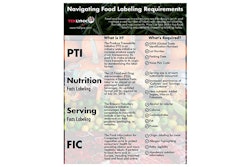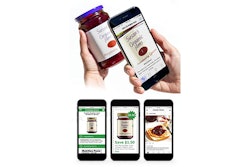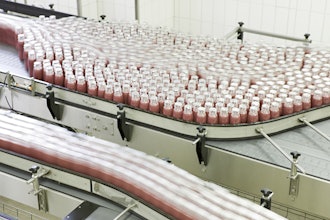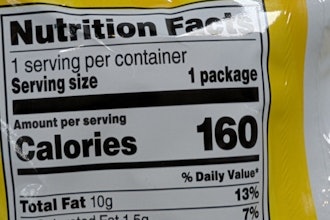We’re taught not to judge a book by its cover. But what about a product by its label? Perhaps the answer depends on the quality of the label itself.
In response to increased market demands for product transparency, merchants and suppliers alike have no option but to double down on product labeling. While companies have identified the need to go beyond traditional labels with a greater breadth and depth of product information, many have struggled to develop and/or invest in the solutions required to successfully execute on promises of increased transparency.
The diversity of product information required to satisfy modern consumers — including ingredients, sourcing, ethicacy and more — is proving difficult for merchants to constantly provide. To add to the challenge, industry initiatives like SmartLabel are putting added pressure on merchants and brands to expand content to more than 350 product attributes. Unfortunately, 78 percent of merchants say their product information systems cannot keep up with consumer demand for transparency, according to 1WorldSync’s recently released report, Charting Course for Global Commerce. Today’s omnichannel sales environment puts more pressure on merchants and suppliers to enhance product content transparency. And they must do so quickly, or risk losing market share to competitors that can.
Moving Forward With New Technologies
The biggest barrier to improved transparency for most merchants and suppliers is a combination of technology and process. Although many companies have invested in stronger back-end systems to support smaller, more frequent orders, many lack the cloud-based solutions necessary to solve today’s cross-channel commerce challenges, as well as the process to ensure that the information in those systems is kept up-to-date and accurate.
The list of benefits for companies using updated systems is extensive. Merchants and suppliers can find efficiencies within their supply chains, ensure complete and consistent information across all channels and devices, save resources by synchronizing routine tasks, scale to meet future business needs and boost their reputations with stronger compliance to regulatory standards and initiatives like SmartLabel and more.
It’s tough to pinpoint exactly why all merchants and suppliers have yet to embrace solutions that would greatly improve their relationships with shoppers. Perhaps companies face budget and time restrictions, or struggle to earn executive buy-in. That said, reasons for investment are much more obvious, and our research highlights just why merchants' and suppliers’ existing solutions simply don’t cut it:
- Three-fourths of merchants struggle to provide consumers with compelling, engaging product descriptions and images (such as 360-degree view and video) sourced directly from supplier partner(s).
- Sixty-four percent of suppliers say their organization’s product information system does not enable sales, supply chain and IT teams to set up and exchange quality product content with trading partners through a single platform.
- Two-in-five suppliers (41 percent) struggle to keep up with different regulatory standards across borders.
Findings like these highlight where merchants and suppliers are struggling. For example, without the ability to provide product descriptions and images, companies will struggle to translate common in-store trust signals to the world of online shopping. Similarly, without systems and processes that enable easy and frequent communication and data exchange, merchants and suppliers will find it nearly impossible to scale and meet the needs of today’s high-frequency shoppers. Considering the omnichannel and global nature of digital sales, infrastructural weaknesses only grow in their ability to undermine a brand or retailer’s market share.
The Time for Better Product Information is Now
The phrase "you are what you eat" has never been more true than it is today. With a rise in food allergies, foodborne illnesses, ingredient-specific diets and even the larger farm-to-table movement, there’s no shortage of attention given to what’s in the products we consume.
However, while more than a third of shoppers now report good or excellent food-production knowledge (up from 24 percent in 2014), there’s much more merchants and suppliers could be doing to aid the transparency revolution.
The biggest change companies can make is to embrace stronger product information systems that empower them to easily adapt and scale with industry initiatives like SmartLabel, which will become increasingly more important in the years to come. In an ideal world, all companies would have a product information system that serves as a single source of truth for all labeling needs. Equipped with a cloud-based solution, merchants and suppliers can provide an empowering customer experience by connecting shoppers with the trusted product information they desire, helping them re-engage with the products they love, or even discover new ones.
All of those improvements start at the label. Sure, it’s not in our best interest to judge a book by its cover. But, when the only other way to see inside a product is through purchase, consumers have little choice but to read into labels.























